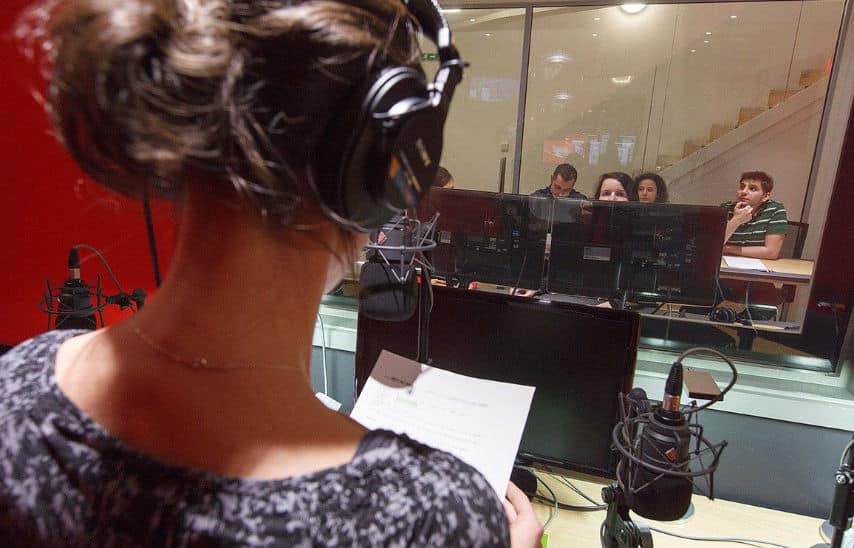Phonetic transcription is the process of transcribing the sounds of speech into written symbols, using a standardized set of symbols known as the International Phonetic Alphabet (IPA). It is a fundamental aspect of linguistics and language learning, as it provides a way to represent the sounds of speech that may not be represented accurately by the written language. Phonetic transcription also provides a way to distinguish between different dialects and accents, as well as regional variations in pronunciation.
Table of Contents
ToggleWhat is Phonetic Transcription?
Phonetic transcription is the process of using the International Phonetic Alphabet (IPA) to represent the sounds of speech in a standardized way. Unlike regular spelling, which often fails to represent the true sounds of a language, phonetic transcription seeks to represent the sounds themselves, including the nuances and variations that exist in speech.
The IPA consists of a set of symbols that represent different sounds, including vowels, consonants, and other speech sounds such as clicks and tones. These symbols are used to transcribe the sounds of speech in a consistent and standardized way.
Phonetic transcription is a complex process that requires a deep understanding of the phonetic alphabet and the various sounds it represents. It is a skill that is developed over time through practice and experience.
Why Is Phonetic Transcription Important?
Phonetic transcription is important for a number of reasons, including its use in language learning, linguistics research, and professional fields such as voice-over work. In language learning, phonetic transcription can help learners better understand the sounds of a language, which can be particularly helpful when learning a language with sounds that do not exist in one’s native language. By accurately representing the sounds of a language, phonetic transcription can also help learners to accurately pronounce words and develop their speaking skills.
In linguistics research, phonetic transcription is used to study the sounds of speech across languages and dialects, as well as to understand the ways in which speech sounds change over time. Phonetic transcription is also used in forensic linguistics, where it is used to analyze and compare speech patterns in legal cases.
In professional fields such as voice-over work, phonetic transcription is crucial for accurately pronouncing difficult words and phrases, particularly in foreign languages. Voice-over artists must be able to accurately reproduce the sounds of speech in order to convey the intended meaning of the text they are reading.
How do you transcribe words into phonetics?
Transcribing words into phonetics requires an understanding of the phonetic alphabet and the various sounds it represents. One approach is to break down the word into its individual sounds and then use the corresponding phonetic symbol to represent each sound. Another approach is to use online resources and tools, such as phonetic transcription dictionaries and software, to transcribe words into phonetics.
When transcribing words into phonetics, it is important to pay attention to the nuances and variations that exist in speech. For example, different speakers may pronounce the same word slightly differently, or different dialects may use different sounds for the same word. A skilled phonetic transcriber must be able to recognize and accurately represent these differences in their transcriptions.
Phonemic vs. Phonetic Transcription
Phonetic transcription is often confused with phonemic transcription, but there are important differences between the two. Phonemic transcription is the process of representing the meaningful sound contrasts (phonemes) of a language. For example, in English, the words “pin” and “bin” have different meanings because they differ by only one sound (the initial consonant). In phonemic transcription, this sound is represented by different symbols (in this case, /p/ and /b/) to show the contrast in meaning.
Phonetic transcription, on the other hand, represents the actual sounds produced in speech, including the variations and nuances that may not be represented in regular spelling. Phonetic transcription is useful for accurately representing the sounds of speech, while phonemic transcription is useful for representing the meaningful sound contrasts of a language.
What are the 44 Phonemic Sounds?
English has 44 phonemic sounds, which are represented by specific symbols in the International Phonetic Alphabet. These sounds include vowels, diphthongs, and consonants, and they are used to form the words of the English language.
The vowels in English are represented by 12 phonemic symbols, including the sounds of “ee,” “oh,” and “oo.” The diphthongs in English are represented by 8 symbols, including the sounds of “oi,” “ow,” and “oy.” The consonants in English are represented by 24 symbols, including the sounds of “p,” “t,” and “k.”
Learning the 44 phonemic sounds of English is an important step in improving language skills and accurately pronouncing words.
Why Should One Learn Phonetic Transcription?
Learning phonetic transcription can help improve language learning skills, increase accuracy in pronouncing words, and provide a better understanding of the sounds of a language. It is also important for professionals such as linguists, language teachers, and voice-over artists who need to understand and accurately reproduce the sounds of speech.
By learning phonetic transcription, individuals can better understand the sounds of a language and develop their speaking skills. This can be particularly helpful when learning a language with sounds that do not exist in one’s native language.
For professionals, such as voice-over artists, accurate pronunciation is crucial for conveying the intended meaning of the text they are reading. Phonetic transcription can help ensure that difficult words and phrases are pronounced correctly and accurately.
What is Phonetic Sound?
A phonetic sound is a sound that is produced by the human vocal tract, such as a vowel or consonant. Phonetic sounds can be represented using the International Phonetic Alphabet (IPA), which provides a standardized set of symbols to represent the various sounds produced in human speech.
The production of phonetic sounds involves the movement of the vocal tract, including the lips, tongue, and vocal cords. Different combinations of movements produce different sounds, which are represented by different symbols in the IPA.
What are the 3 Types of Phonetics?
Phonetics can be divided into three main types: articulatory phonetics, acoustic phonetics, and auditory phonetics.
Articulatory phonetics focuses on the physical movements involved in producing speech sounds, including the position of the lips, tongue, and vocal cords. This type of phonetics is particularly useful for understanding the mechanics of speech production and for helping individuals improve their speaking skills.
Acoustic phonetics deals with the physical properties of sound waves, including their frequency, amplitude, and duration. This type of phonetics is particularly useful for understanding how speech sounds are transmitted and perceived.
Auditory phonetics focuses on how the ear perceives and processes speech sounds. This type of phonetics is particularly useful for understanding how speech sounds are perceived by individuals with hearing impairments, as well as for understanding the ways in which speech sounds are processed in the brain.
How To Use IPA Transcriptions
To use IPA transcriptions, it is important to first become familiar with the phonetic symbols used in the International Phonetic Alphabet. This can be done through studying the IPA chart, listening to and practicing the sounds, and using resources such as phonetic transcription dictionaries and software.
When transcribing words into phonetics using the IPA, it is important to accurately represent the sounds produced in speech. This can be challenging, as different dialects and accents may use slightly different sounds for the same word. A skilled phonetic transcriber must be able to recognize and accurately represent these differences in their transcriptions.
Jobs Using Phonetic Transcription
Phonetic transcription is used in a variety of professions, including linguistics, language teaching, speech therapy, and voice-over work. In linguistics, phonetic transcription is used to study the sounds of speech across languages and dialects, as well as to understand the ways in which speech sounds change over time.
In language teaching, phonetic transcription can help learners better understand the sounds of a language and improve their speaking skills. In speech therapy, phonetic transcription is used to diagnose and treat speech disorders, such as those related to articulation and pronunciation.
In voice-over work, phonetic transcription is crucial for accurately pronouncing difficult words and phrases, particularly in foreign languages. Voice-over artists must be able to accurately reproduce the sounds of speech in order to convey the intended meaning of the text they are reading.
Other Uses for Phonetic Transcription
Phonetic transcription is also used in fields such as forensic linguistics, where it is used to analyze and compare speech patterns in legal cases. By analyzing the phonetic patterns in speech, forensic linguists can identify the speaker or speakers in a given case.
Phonetic transcription is also used in the study of animal communication, where it is used to represent the sounds produced by different animal species. By transcribing animal sounds into phonetics, researchers can better understand the communication patterns and behaviors of different animal species.
Conclusion
Phonetic transcription is a crucial tool for voice-over artists who need to accurately pronounce difficult words and phrases, particularly in foreign languages. By transcribing the sounds of speech using the International Phonetic Alphabet, voice-over artists can ensure that they are accurately reproducing the intended sounds of a language, conveying the intended meaning of the text they are reading, and providing an authentic experience for listeners.
Voice-over artists who work in a variety of fields, such as animation, film, television, and video games, rely on phonetic transcription to ensure that they are delivering high-quality performances that accurately convey the intended meaning of the text. By mastering phonetic transcription, voice-over artists can accurately reproduce the sounds of speech, including the nuances and variations that may exist in different dialects and accents, making their performances more authentic and engaging for audiences.
Furthermore, learning phonetic transcription can also help voice-over artists to develop their own language skills and improve their ability to accurately pronounce words and phrases in different languages. This can be particularly helpful for artists who work in international markets and need to be able to adapt to different language and cultural contexts.
In conclusion, phonetic transcription is a powerful tool for voice-over artists, allowing them to accurately represent the sounds of speech and convey the intended meaning of the text they are reading. By developing their skills in phonetic transcription, voice-over artists can improve their language skills, better serve their clients, and deliver high-quality performances that engage and captivate audiences around the world.






















